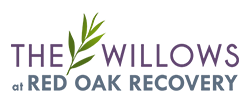Addiction is deeply personal and difficult to overcome. Some people end up trading one dependency for another, which is known as cross addiction. When someone replaces one substance or behavior with a new addiction, sometimes unconsciously, they’re often doing so to cope or fill a void left in recovery. Cross addiction presents unique challenges for people struggling and their families—challenges that comprehensive treatment can help overcome.
What is cross addiction?
Cross addiction (sometimes called “addiction interaction disorder”) occurs when someone who has overcome dependency on one substance or behavior develops a new addiction to another. It’s not merely a swap of harmful habits but stems from the same psychological and physiological processes that drove the original addiction. Cross addiction adds more challenges to recovery, including new triggers and risks to long-term sobriety.
Unlike primary addiction, which focuses on dependence on a single substance or activity, cross addiction involves the transition between addictions. The transition can be subtle, especially after someone is more outwardly healthy during recovery. Still, someone with cross addiction will be dealing with strong cravings and deep-seated emotional needs.
Examples of cross addiction
- Addiction substitution: When someone replaces one form of addiction with another. For instance, a person recovering from alcohol use disorder may start excessively gambling, binge eating, or shopping compulsively to cope with unresolved feelings.
- Addiction replacement: Stems from the same reward pathways in the brain as the original. A person might transition from abusing prescription painkillers to illicit drugs with a similar effect, like heroin.
- Polysubstance dependence: Simultaneous dependency on multiple substances. Someone using both alcohol and cocaine, for example, may develop another addiction as they attempt to quit one substance but rely more heavily on the other to compensate.
Why do people develop cross addiction?
Cross addiction can often be traced back to deep-seated psychological influences that make people more prone to developing multiple dependencies. These factors are interconnected, creating a cycle that fuels addictive behaviors and hinders recovery efforts.
Reinforcement and habits
The brain’s reward system is a major contributor to cross addiction. Addictive behaviors release dopamine, a neurotransmitter associated with pleasure and reinforcement. Over time, the brain becomes conditioned to crave the reward, even after recovering from the initial addiction. This heightened sensitivity can leave people more susceptible to developing new addictive patterns.
Trauma
Trauma, whether from childhood experiences or traumatic events as an adult, is a leading cause of addiction and cross addiction. People who have experienced physical, emotional, or psychological harm often struggle to process their pain. Substances or addictive behaviors can become a way to numb difficult emotions or escape from distress. While someone can overcome addiction, if they leave their trauma unprocessed, they are at risk of developing a cross addiction.
Stress
Stress plays a powerful role in addiction. Chronic stress, whether from work, relationships, or life changes, can overwhelm the brain’s ability to cope. Addictive behaviors or substances can provide temporary relief from stress. However, once one addiction is addressed, if underlying stress persists, someone might continue seeking relief through a different substance or behavior.
Mental health
Mental health conditions like anxiety, depression, or post-traumatic stress disorder (PTSD) frequently co-occur with addiction. These conditions create an ongoing emotional struggle that increases the likelihood of developing cross addiction. For example, having depression without effective coping strategies may lead someone in recovery from alcohol addiction to turn to something else to try and cope with their symptoms.
How common is cross addiction?
It’s hard to tell exactly how many people struggle with cross addiction. People in recovery, especially if they have drastically improved their health, may be reluctant to get treatment for a behavior (or substance) that they’re using to maintain their progress. But it’s probably more common than you think. One study revealed that around 20% of the population struggle with two or more addictive behaviors or substances at once.
Risk factors for developing addiction interaction disorder
Certain factors make people more vulnerable to cross addiction, including:
- Co-occurring disorders: Many people with a substance use disorder also experience a mental health condition, significantly increasing the risk of cross addiction. Conditions like anxiety and depression can drive individuals to seek relief from alternative substances or behaviors.
- Exposure to high-stress environment: Prolonged stress and insufficient coping mechanisms can perpetuate cycles of addiction. Stressful life events or ongoing environmental pressures often amplify susceptibility.
- Incomplete treatment: Focusing solely on the primary addiction without addressing underlying emotional, psychological, or social factors can leave individuals vulnerable to substituting one dependency for another.
How can you tell if someone has a cross addiction?
Since cross addiction involves shifting substances or behaviors, its signs can vary widely. Sometimes, it’s clear that someone is taking a new passion too far. You might be able to see them chain smoking or turning to weed after they quit drinking. Other times, though, you might only notice small changes.
Behavioral signs
- Overworking, overeating, or exercising too much
- New obsessions
- Increased secretiveness
- Skipping therapy, support groups, or relapse prevention strategies
Emotional Signs
- Mood swings
- Restlessness or anxiety
- Guilt or shame
- Withdrawal from loved ones
Physical Signs
- Changes in appearance
- Insomnia, oversleeping, or unusual sleep patterns
- Frequent health issues
What can you do to prevent cross addiction?
Not everyone will be able to prevent cross addiction. Relapse is a normal part of the recovery process, and there’s no true “cure” for addiction—it can only be managed. Having a solid plan for recovery is the best way to lessen the risk of developing a cross addiction. During addiction treatment, you might do some of this work, including:
- Identifying and avoiding personal triggers through self-awareness and therapy.
- Practicing healthy coping methods like exercise, mindfulness, and creative activities.
- Building a strong support network, such as recovery groups or supportive peers.
- Developing a personalized relapse prevention plan that addresses early warning signs and promotes immediate healthy responses.
- Engaging in professional therapy and comprehensive treatment programs when needed.
- Prioritizing self-care and monitoring progress to stay focused on long-term recovery.
Red Oak knows that everyone will have a different journey through recovery. Some of the men we help are more at risk of developing a cross addiction, and we want to help them find the tools they need to maintain their progress.
How can treatment at Red Oak help?
The clinician-run programs at Red Oak Recovery offer comprehensive care that promotes sustainable recovery:
- Dual diagnosis treatment: Expert support for those facing both substance use and mental health challenges, ensuring integrated, whole-person care.
- Holistic methods: Incorporating mindfulness, experiential therapy, and nutrition to address mind, body, and spirit.
- Personalized plans: Each client receives an individualized treatment plan that targets their specific needs and circumstances.
- Gender-specific care: We are a men’s-only treatment center, providing a safe and supportive environment for men to focus on their recovery.
- Family-centered support: Family involvement and education that strengthens relationships and supports lasting recovery.
- Long-term recovery strategies: Emphasis on aftercare, relapse prevention, and ongoing support to sustain recovery beyond treatment.
Our alcohol and drug addiction treatment center is located in beautiful Western North Carolina, nestled in the foothills of the Blue Ridge Mountains. Men who come to Red Oak receive a balanced treatment experience that blends wilderness therapy with evidence-based practices. Find help for yourself or a man in your life by calling 828.382.9699 or messaging us online now.





